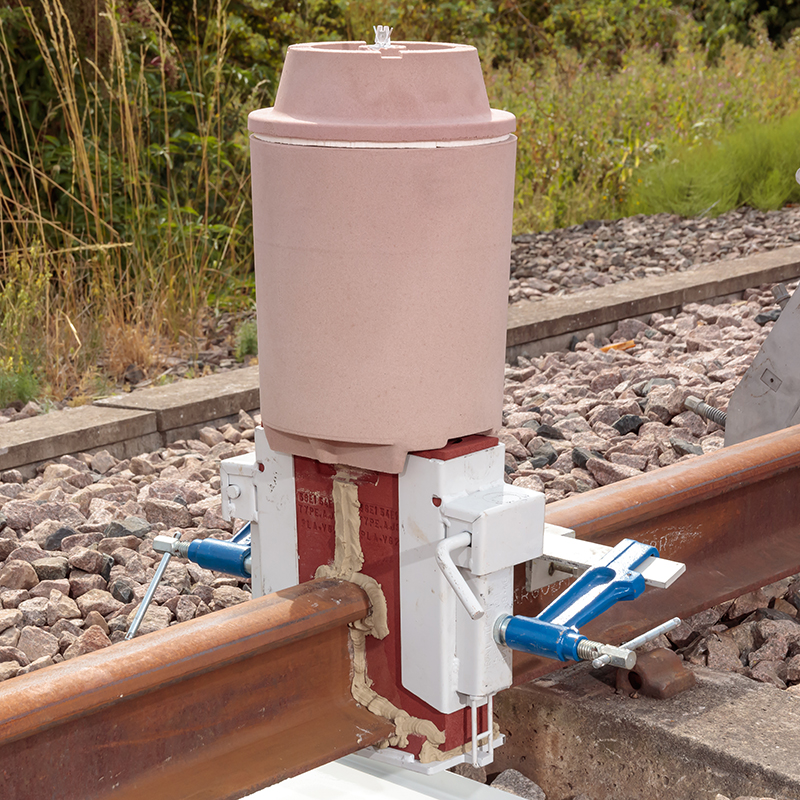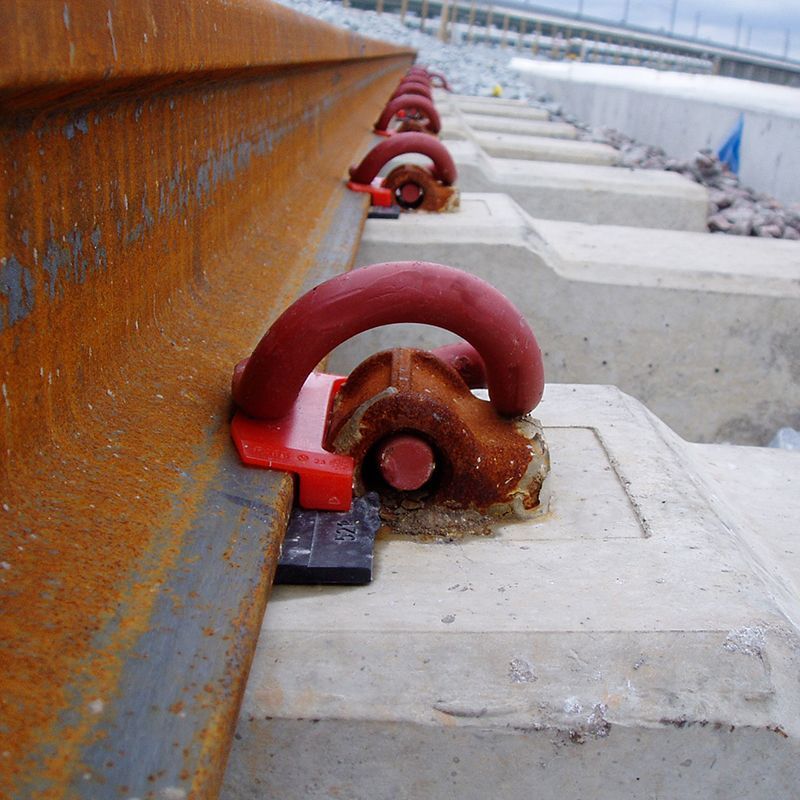For the third rail system, Pandrol supplied the RAS co-extruded conductor rail system. Developed and supplied by Railtech Alu Singen, a joint venture between Pandrol and Constellium Group, the aluminium/stainless steel conductor rail is made using co-extrusion technology that delivers high levels of reliability and stability. With no delamination and no need to control the thickness of stainless steel, its expected lifetime is 20% higher than other composite rail technology.
Anchoring solutions were selected from a wide range of standard Pandrol products. Protection board brackets are used to support the protection board at a distance above the steel contact rail. Designed with outstanding electrical properties, insulating covers provide protection for employees working near the track. The Pandrol team used its extensive track expertise to carry out a full analysis of layout to ensure train power continuity and is providing technical service and support throughout the installation and commissioning phases.
Pandol’s Single Resilient (SRS) fastening system’s full insulation and excellent stray current protection make it an ideal solution for Hanoi Line 3. Incorporating e-Clip assembly, the non-bonded, low-profile system consists of a cast baseplate and a resilient pad. Vertically serrated holes allow for lateral adjustment and components can be easily changed to meet loading requirements. Sizes, thicknesses and materials have been tailored to suit the application.
Pandrol’s final contribution to the project has been PLA one-shot crucible aluminothermic welding kits. The aluminothermic welding process involves molten steel produced through the reaction of iron oxide and aluminium being cast at a temperature exceeding 3,500°F into refractory moulds designed to suit the rails to be welded. The one-shot crucible is made from bonded refractory sand and does not require any preparation. For Hanoi Line 3, the aluminothermic welding kit was provided with a weld portion and mould designed to suit the requirements of the specific rail profile.
The Pandrol team assisted Colas with on-site training in the use of the technology, including instruction and demonstration of products and equipment, and welder certification.

